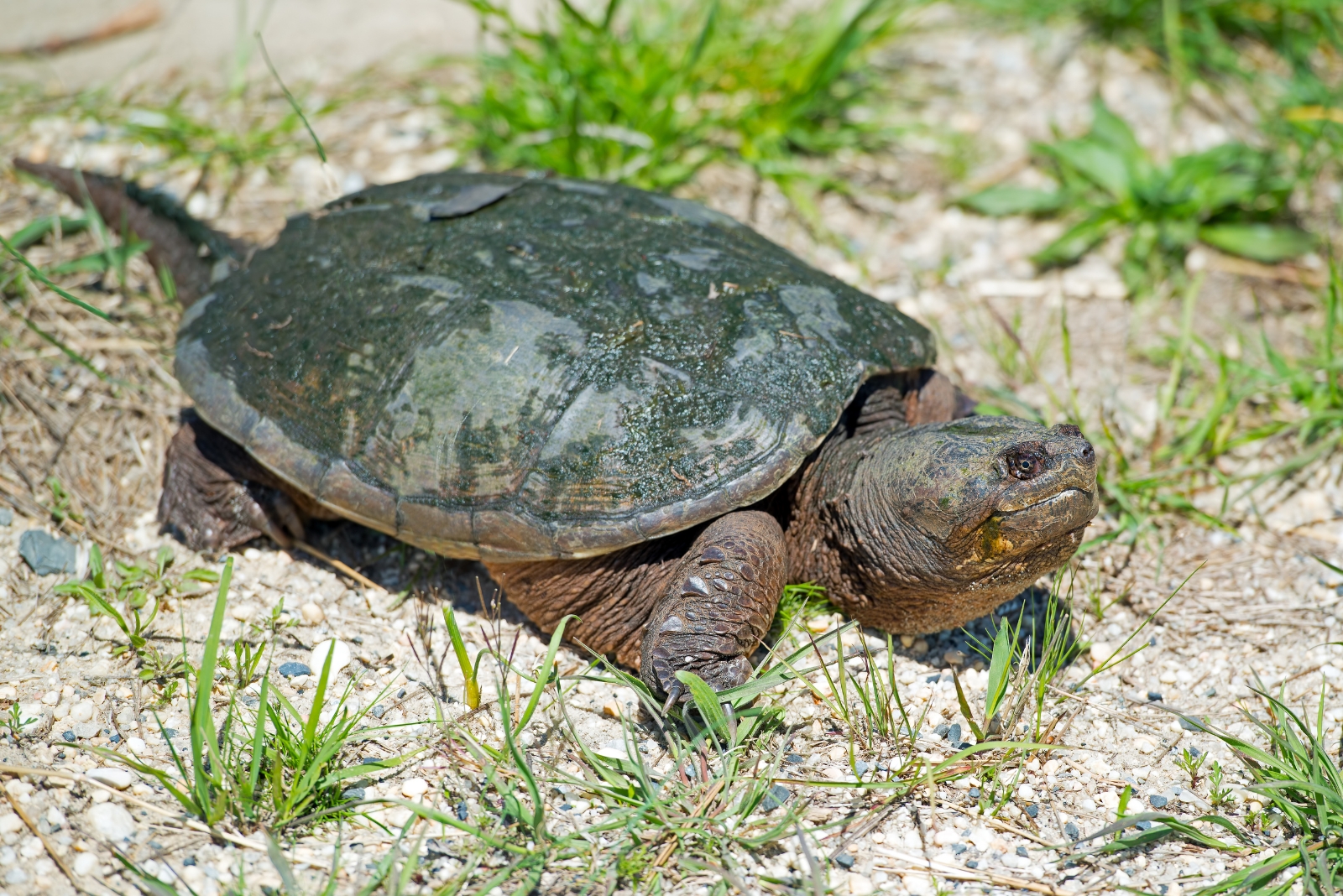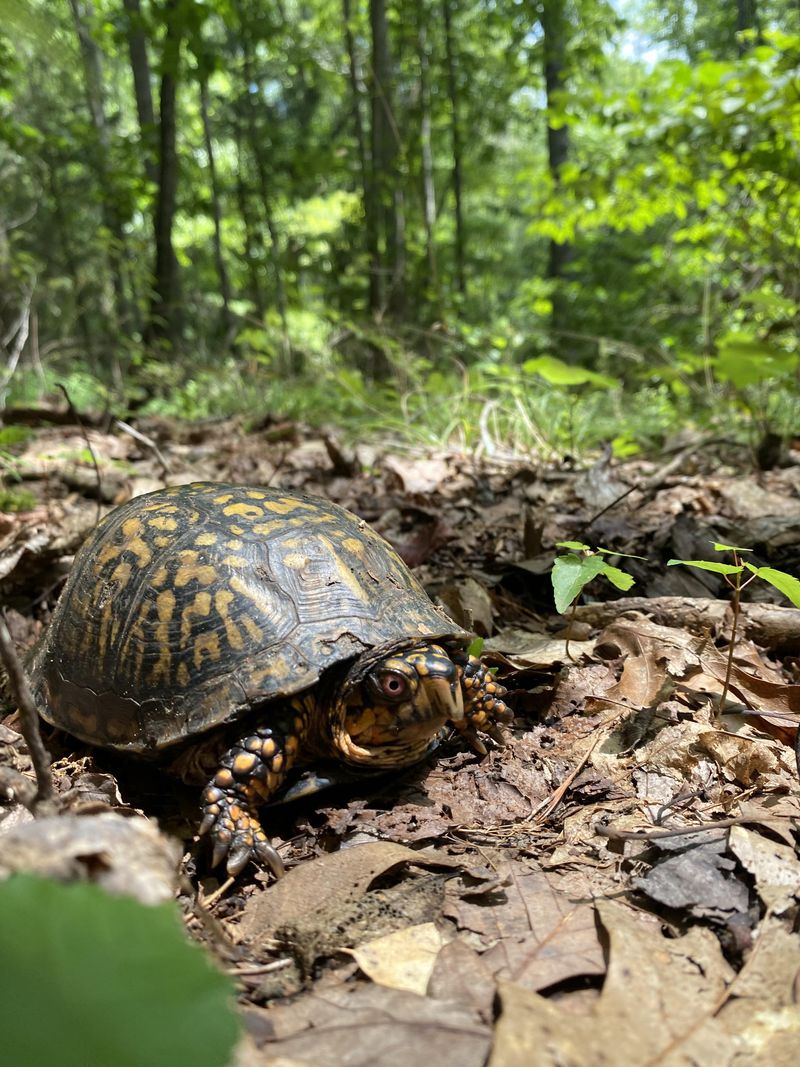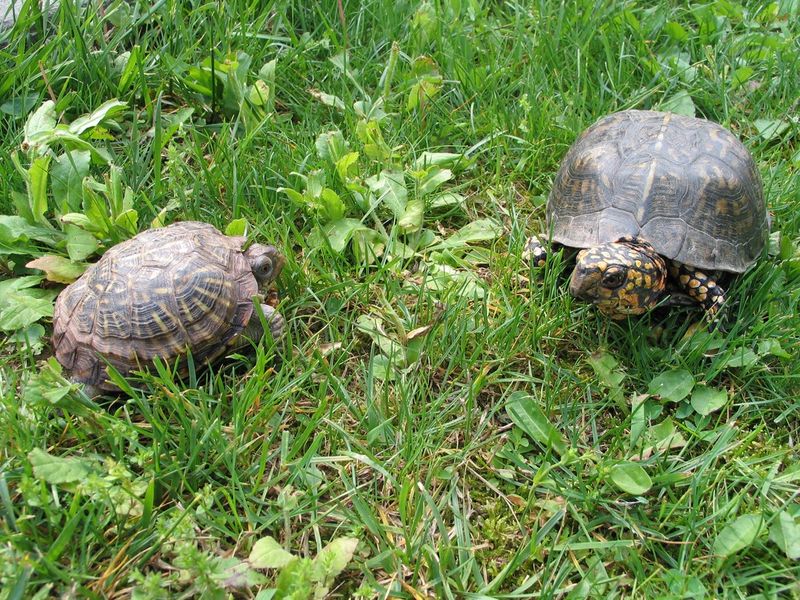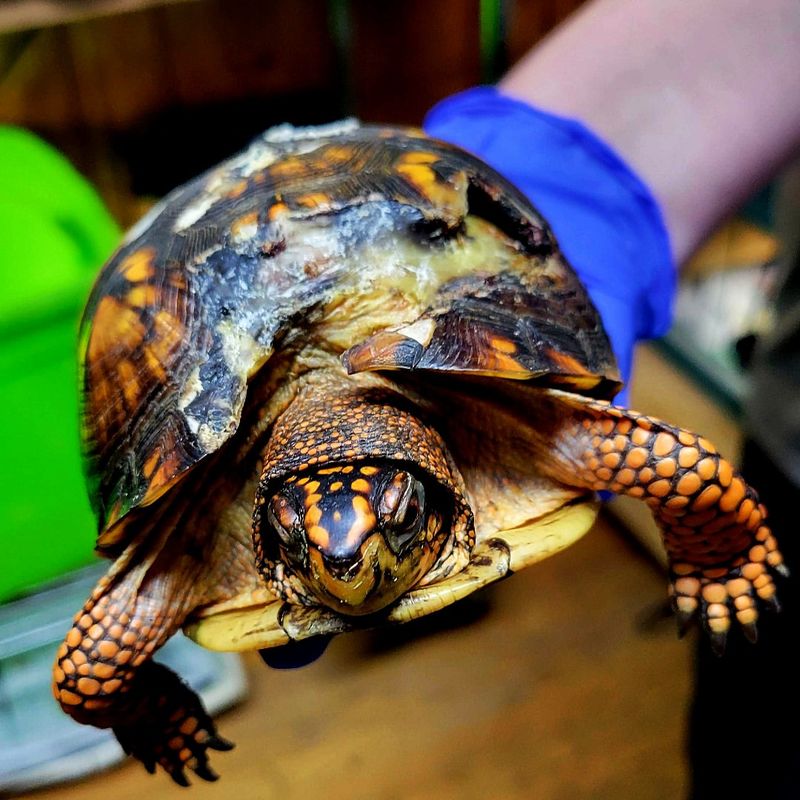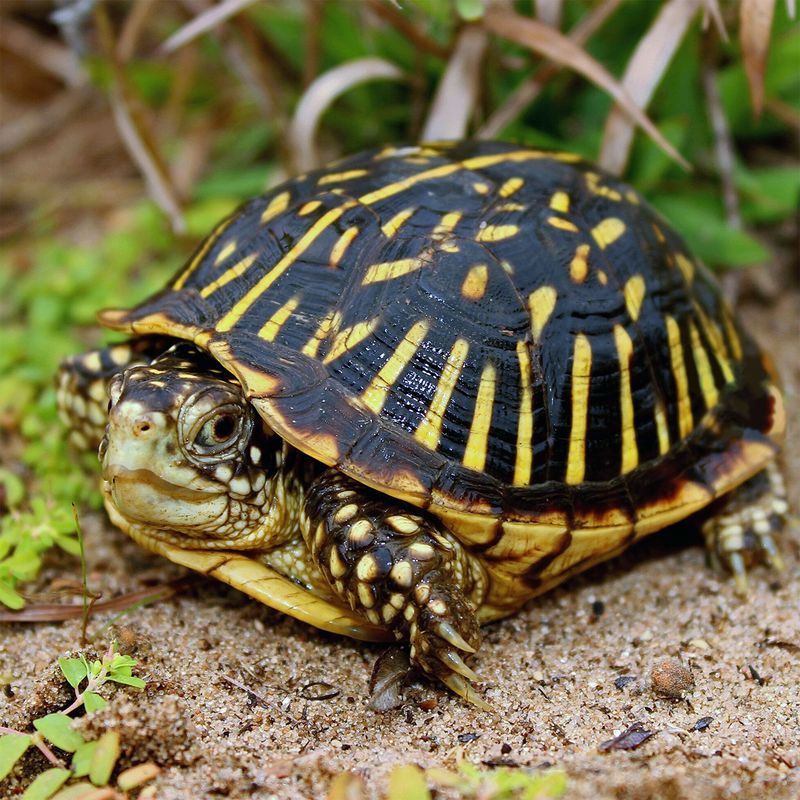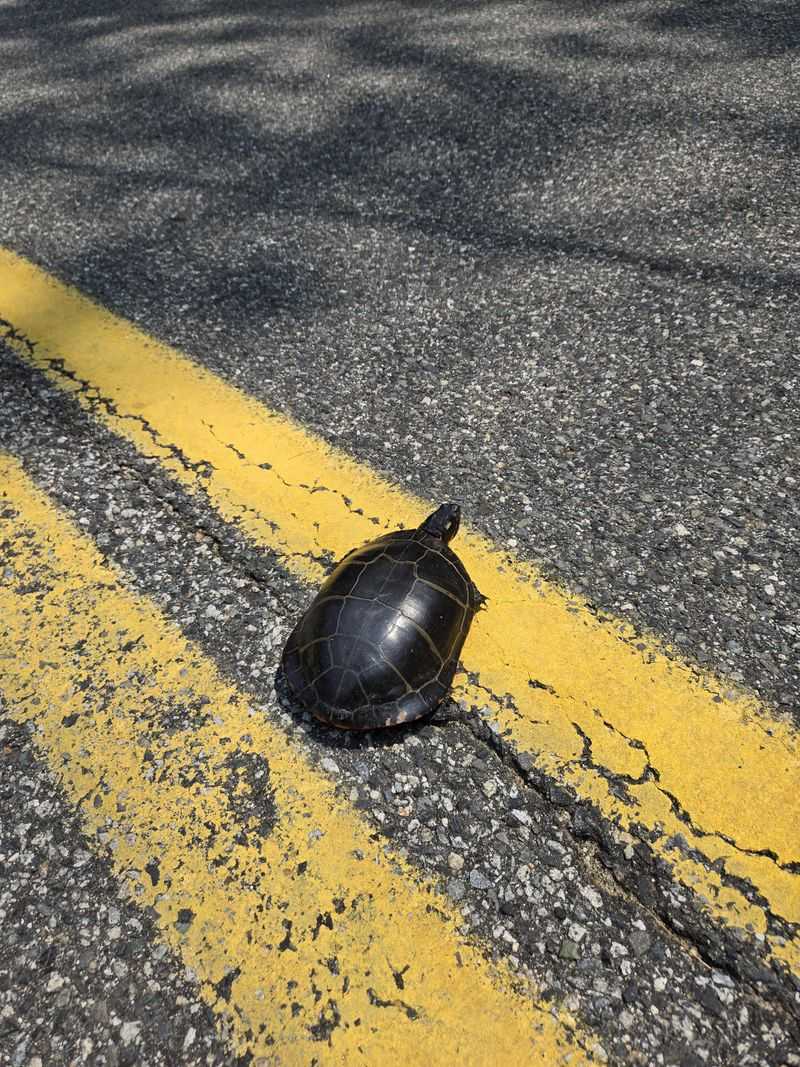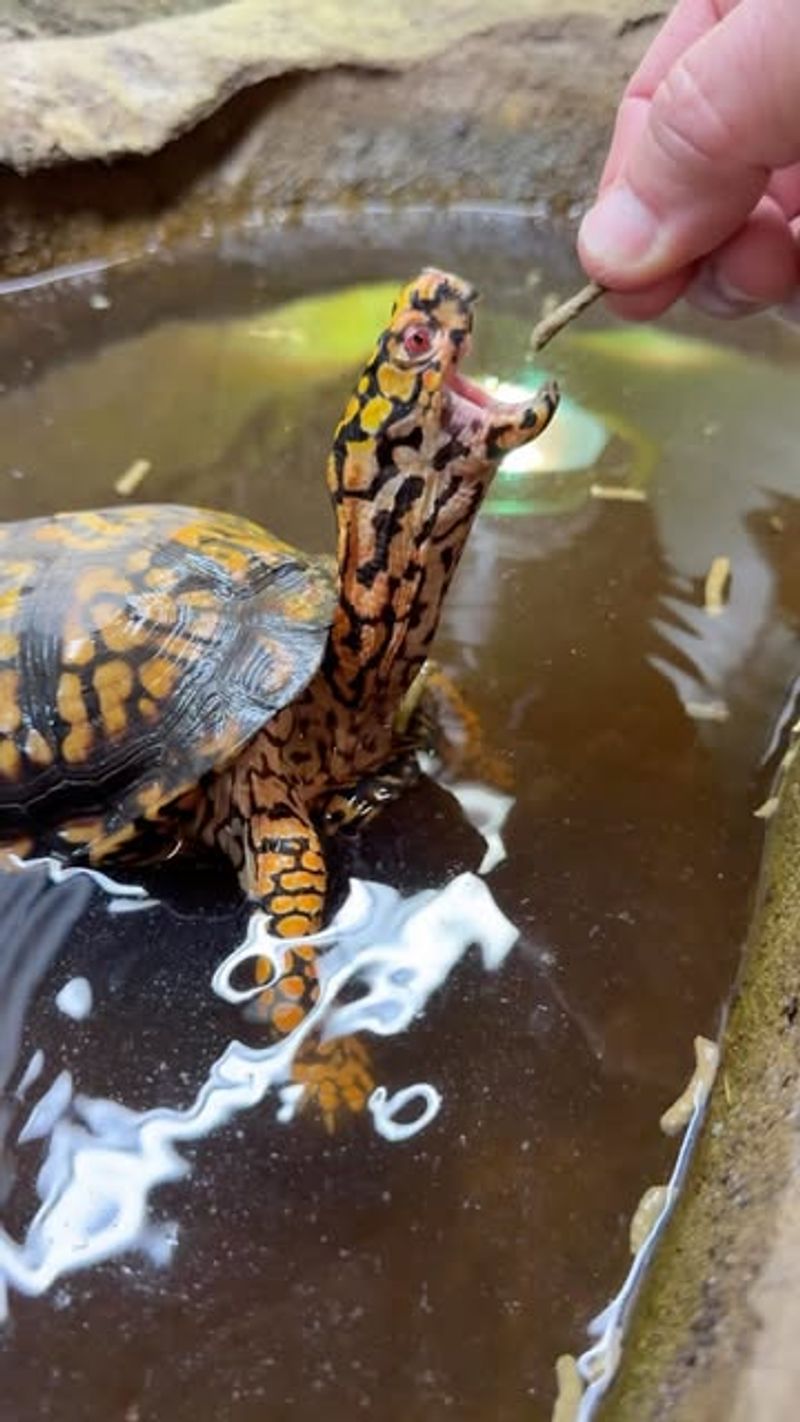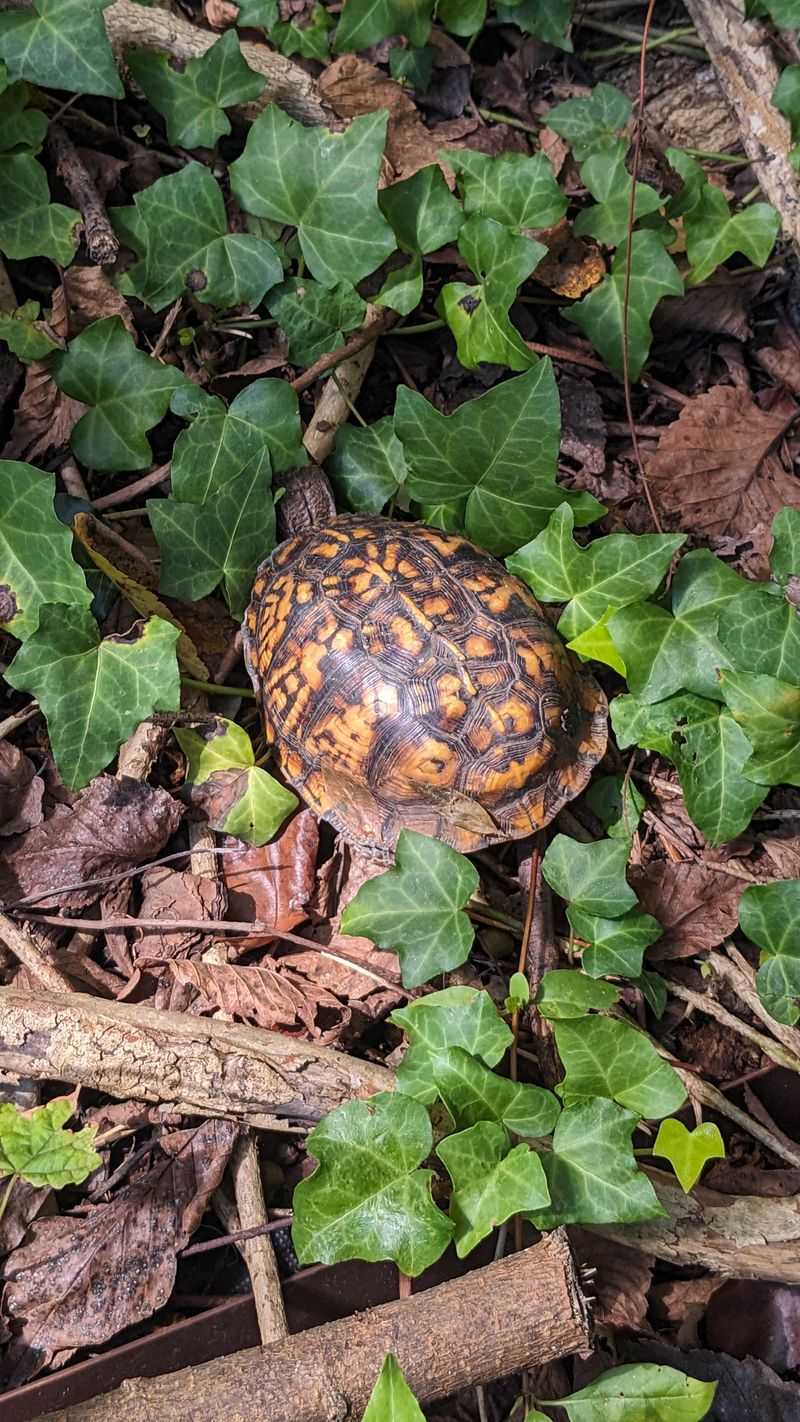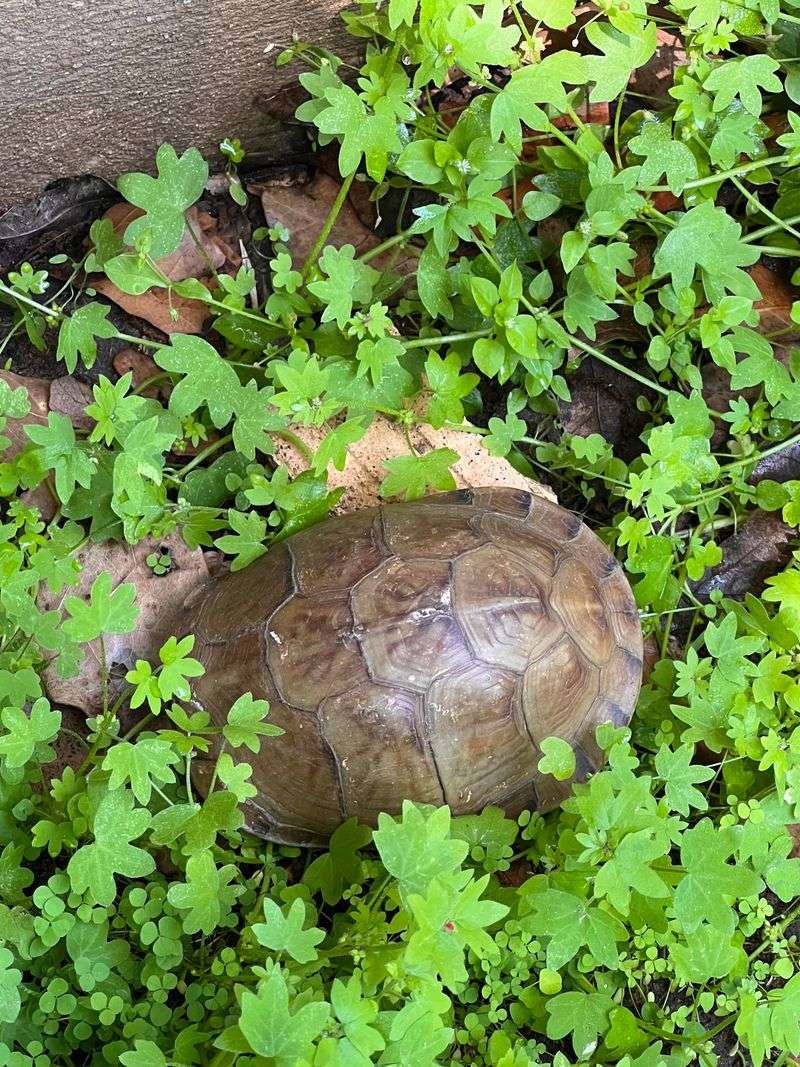Indiana yards get surprise visitors sometimes, and a slow-moving turtle can catch you off guard. I had one wander up to my porch once, and it instantly became the main event.
Helping them safely takes just a few simple steps. With a calm approach, the whole moment stays sweet and stress-free.
1. Watch From A Safe Distance First
Your first instinct might be to run right up and touch it, but hold on a second. Turtles can get stressed when humans approach too quickly, and some species might even snap if they feel threatened.
Take a moment to observe from about ten feet away. Indiana residents often spot box turtles and painted turtles, which are generally harmless but still deserve respect.
Watch how it moves and where it seems to be heading before you decide what to do next.
2. Identify What Kind Of Turtle It Is
Different turtle species need different treatment, so identification matters. Box turtles have domed shells with yellow or orange markings, while painted turtles show red streaks along their shells and legs.
Snapping turtles are the ones you really need to recognize—they have rough, ridged shells and powerful jaws. Many Indiana homeowners use their smartphones to snap a quick photo and search online for identification.
Local wildlife guides can help too.
3. Check If The Turtle Needs Help
Not every turtle that shows up needs rescuing. Most are just passing through on their way to find food, water, or a nesting spot.
Look for obvious signs of injury like cracks in the shell, bleeding, or difficulty moving. If the turtle seems healthy and active, it probably just needs to be left alone to continue its journey across your Indiana property.
Injured turtles, however, definitely need professional wildlife care right away.
4. Keep Pets And Kids Away
Curious dogs can seriously harm turtles, and even friendly cats might see them as toys. Your pets mean well, but they don’t understand that turtles are fragile creatures.
Children also need supervision around turtles since they might accidentally drop them or handle them too roughly. Create a safe buffer zone and explain to everyone in your Indiana household why the turtle needs space.
Excitement is natural, but safety comes first for everyone involved.
5. Help It Cross If It’s On A Road
Turtles crossing roads face serious danger from cars, and they move incredibly slowly. If you find one in the street near your Indiana home, you can definitely lend a hand.
Always move the turtle in the direction it was already traveling—never relocate it somewhere else. Pick it up by the sides of its shell, keeping it low to the ground in case it wiggles free.
Snapping turtles require extra caution though.
6. Provide Water But Not Food
On hot Indiana summer days, a thirsty turtle might appreciate a shallow dish of fresh water. Place it nearby but don’t force the turtle to drink or bathe.
Feeding wild turtles is a different story—it can actually harm them since their digestive systems are adapted to specific natural foods. Human food or the wrong type of vegetation might make them sick.
Water is helpful; food should come from their natural environment instead.
7. Never Relocate It Far From Where You Found It
Turtles have home territories they know well, and moving them confuses their natural navigation. That pond across town might seem perfect, but the turtle won’t know where to find food or shelter there.
Indiana turtles can spend their entire lives in surprisingly small areas. If you move one far away, it might spend weeks trying to return, crossing dangerous roads in the process.
Let it stay in its familiar neighborhood.
8. Contact Wildlife Experts If Something Seems Wrong
When you’re unsure what to do, professional help is just a phone call away. Indiana has wildlife rehabilitation centers and conservation officers who handle turtle situations regularly.
They can advise you on whether the turtle needs medical attention or if it’s safe to leave alone. Some situations, like finding eggs or dealing with protected species, require expert knowledge.
Don’t hesitate to reach out—these professionals exist to help both people and wildlife coexist peacefully.

